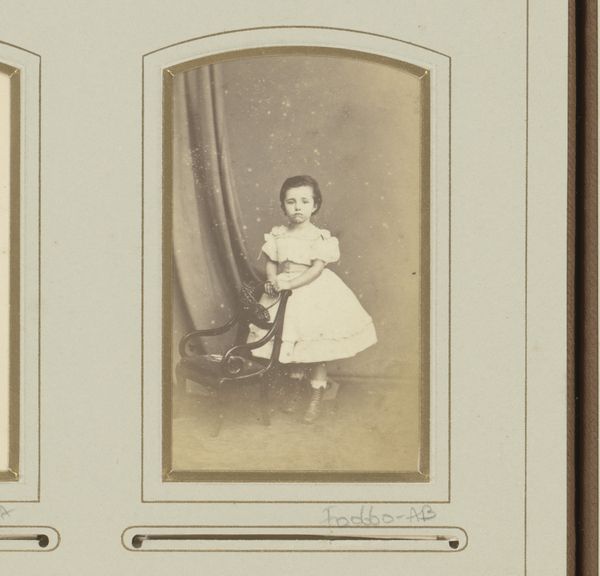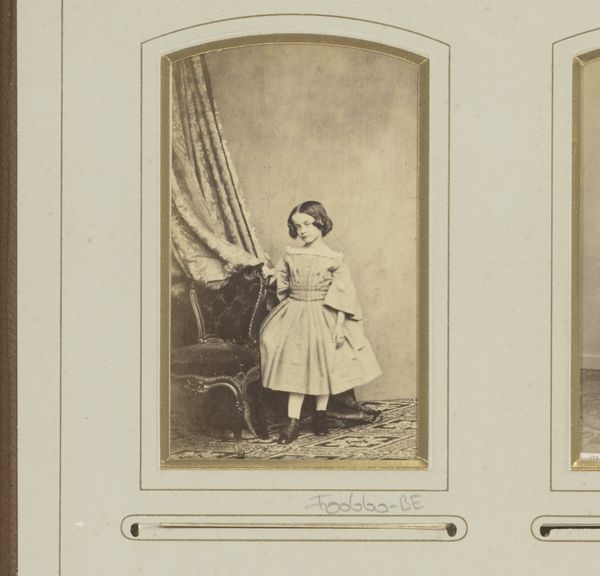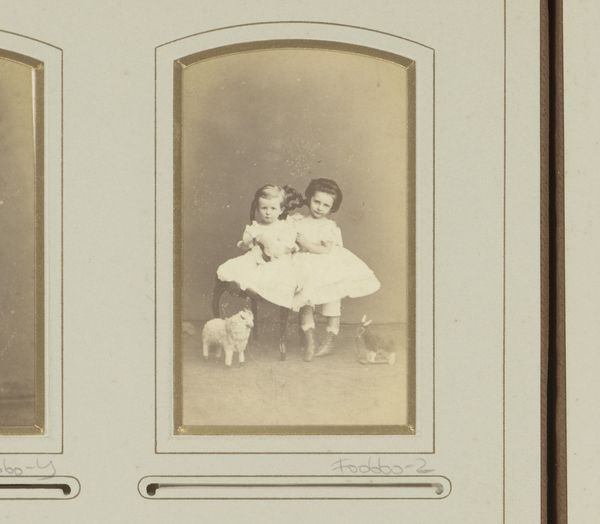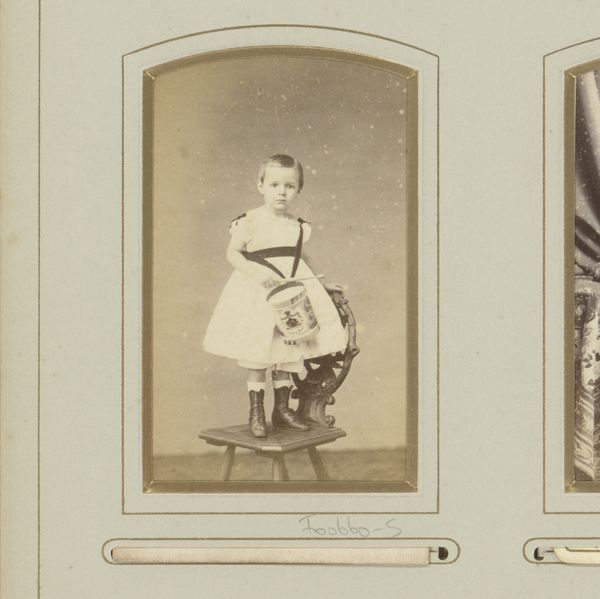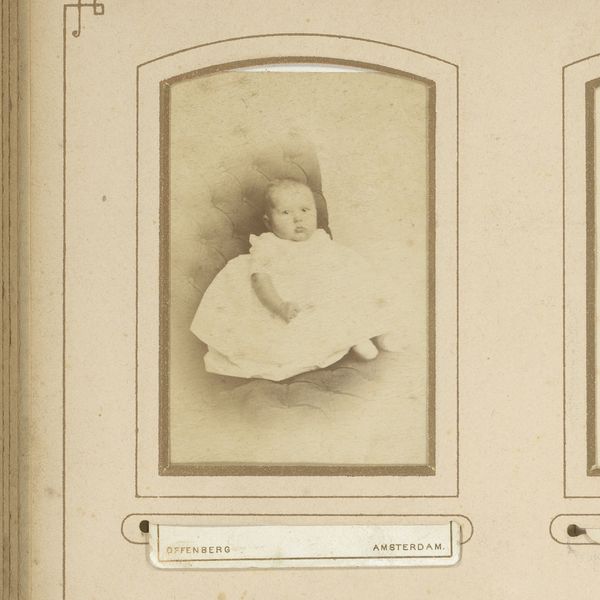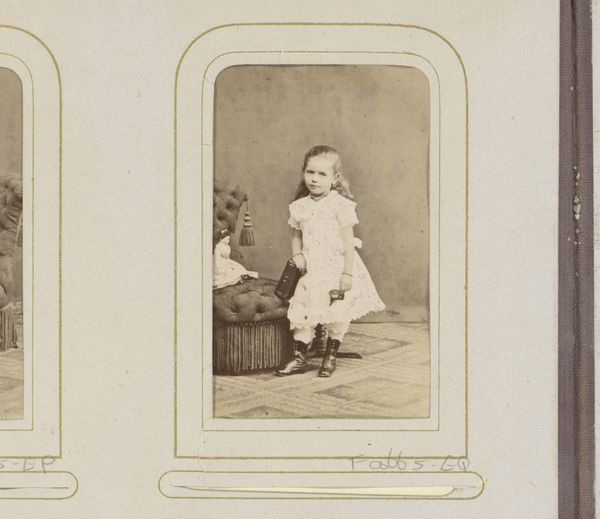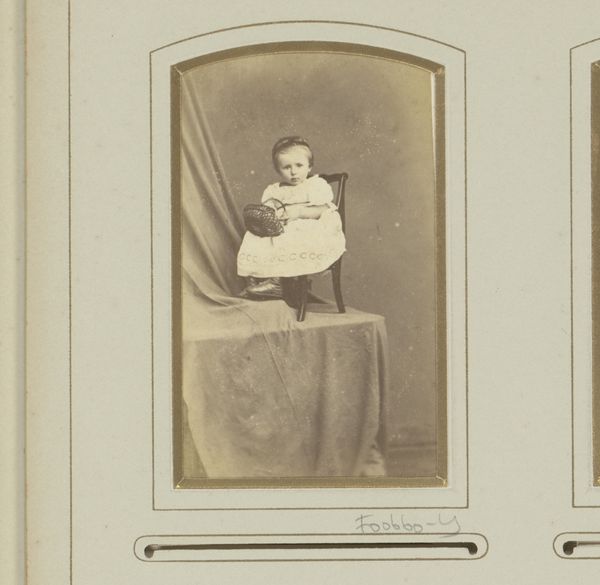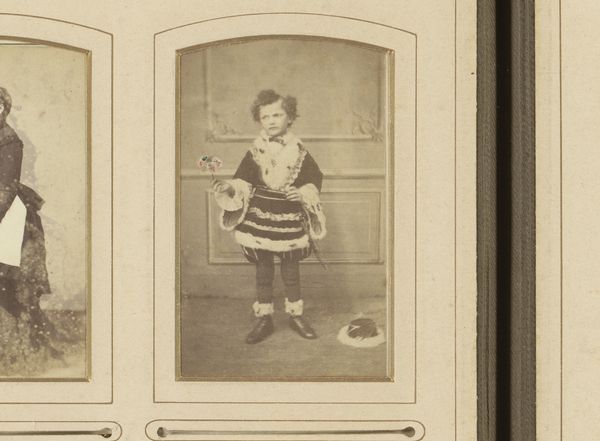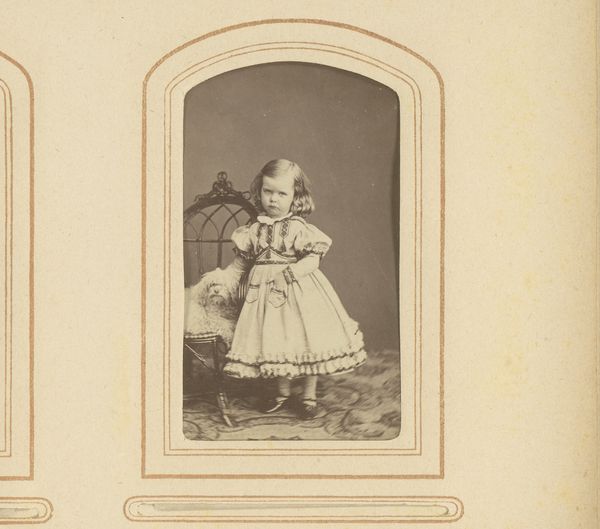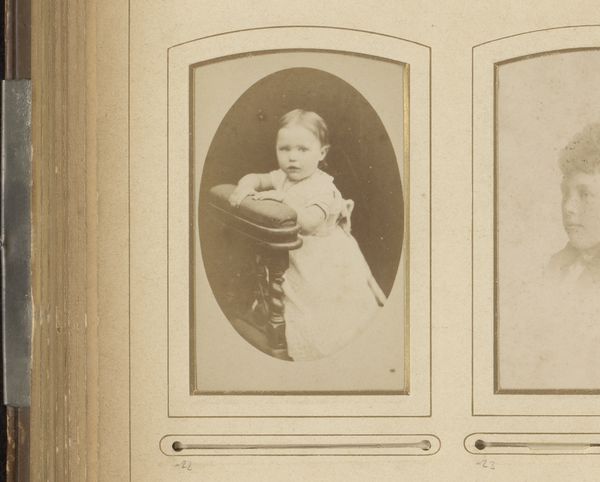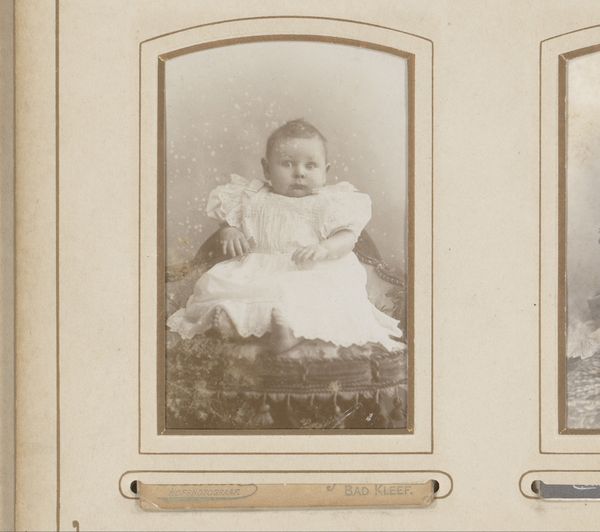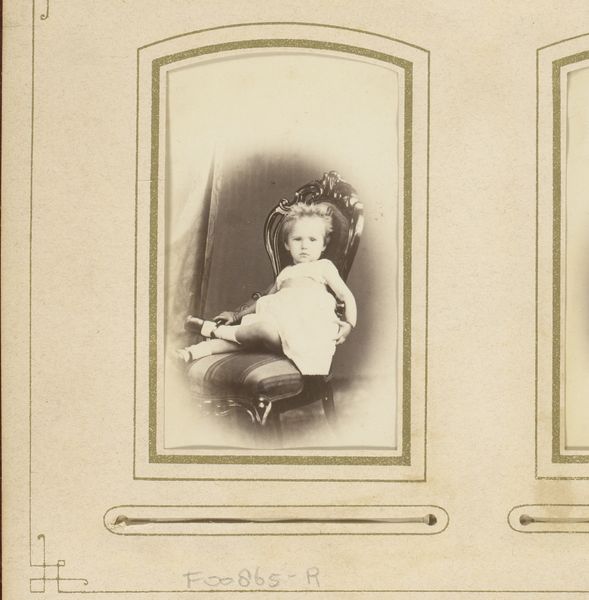
photography, gelatin-silver-print
#
portrait
#
photography
#
gelatin-silver-print
#
genre-painting
Dimensions: height 84 mm, width 51 mm
Copyright: Rijks Museum: Open Domain
Curator: This gelatin-silver print, entitled "Portret van een jong meisje bij een tafel met boek in de hand," which roughly translates to "Portrait of a Young Girl at a Table Holding a Book," offers us a glimpse into the late 19th century. Dating between 1850 and 1900, the artist is unknown, making the photograph even more intriguing. Editor: Isn’t it darling? The sepia tones give the whole scene this precious, almost solemn air, and the little girl clutching what I presume is that book, like a tiny, defiant scholar. She doesn't quite look like she is enjoying having her photograph taken though. Curator: Studio portraiture during this era was often an exercise in social construction, shaping and representing specific ideals of childhood. Consider the carefully chosen clothing, the placement of the child beside the table, all communicating notions of innocence and virtue, and perhaps even burgeoning literacy. Editor: It's like they were trying to create these perfect little specimens, frozen in time. What strikes me, though, is the feeling that she would rather be running wild somewhere. The pose is rigid, but her eyes seem to say something different. There’s this flicker of rebelliousness in that stare, wouldn’t you say? Curator: Perhaps, though, it’s important to remember the technical limitations of photography at that time. Longer exposure times demanded stillness, making natural expressions challenging to capture. So the "rebelliousness," as you call it, may simply be the fleeting expression of an uncomfortable child. Editor: Still, that discomfort, however unintentional, gives it an undeniable edge. It humanizes the image, piercing through that veneer of contrived perfection. It makes her more real to me, even across all these years. What do you suppose the context was for displaying it, who it was made for? Curator: More often than not, portraits such as this one, would have likely been circulated privately within a family or close circle. They functioned as sentimental keepsakes but also reinforced social standing. A growing visual archive of the domestic sphere. Editor: Looking at it now, I get this uncanny sense of intimacy, a ghostly peek into someone's vanished reality. All the aspirations of an age locked into a slightly resistant gaze. Curator: Indeed, this little portrait encapsulates the complex intersection of personal identity and social representation. It invites us to ponder what was prioritized in depictions of childhood during this particular moment in history.
Comments
No comments
Be the first to comment and join the conversation on the ultimate creative platform.
